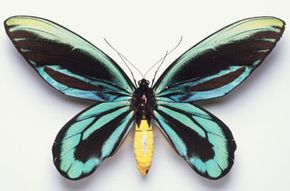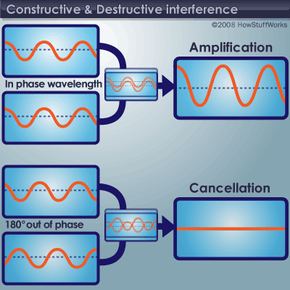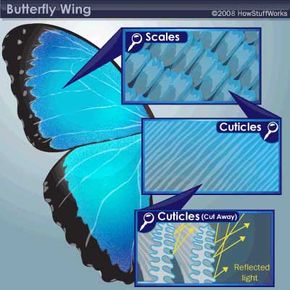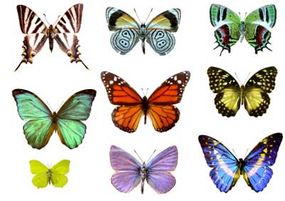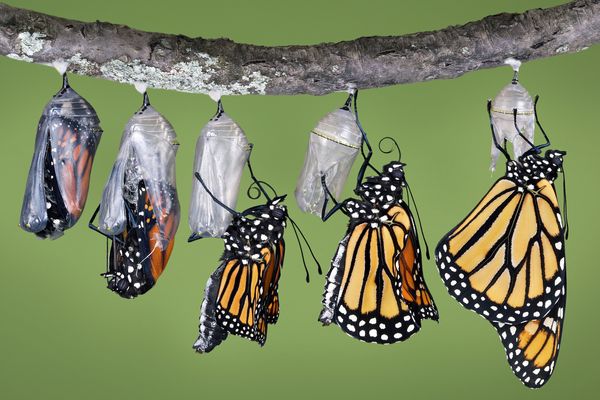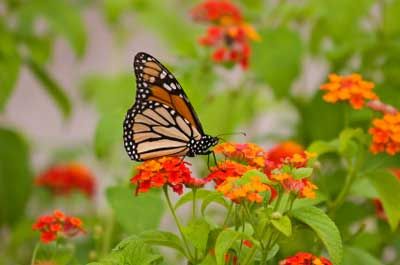Butterflies possess some of the most striking color displays found in nature. As they fly from flower to flower gathering nectar, their brightly colored wings seem to shimmer and change colors before your eyes. Pilots flying above the rainforest can see the bright blues of the morpho butterfly of South America up to half a mile away [source: Vukusic]. A butterfly's rich color can act as camouflage, mate attraction and warning signal.
But what is it that makes the vivid colors of butterfly wings appear to dance? How can they possess such intense hues?
Advertisement
Butterflies actually get their colors from two different sources: ordinary (or pigmented) color and structural color. The ordinary color comes from normal chemical pigments that absorb certain wavelengths of light and reflect others. For example, the pigment chlorophyll colors plants green. The chlorophyll soaks up the blue and red colors of the spectrum, but not the green, which you see when it bounces back to your eye. Most butterflies get their different shades of brown and yellow from melanin, the same pigment that makes you tan in summer and gives some people freckles.
The structural color of butterflies is where things get interesting. This type of color stems from the specific structure of the butterflies' wings and explains why some of a butterfly's colors seem to shift and appear so intense. This quality of changing colors as you, the observer, moves is known as iridescence, and it occurs more in nature than you might think. Mother of pearl seashells, fish and peacocks are just a few examples of animals with this quality, but it is most pronounced in the butterfly family. It happens when light passes through a transparent, multilayered surface and is reflected more than once. The multiple reflections compound one another and intensify colors.
Learn how the qualities of iridescence and the structure of a butterfly's wings join forces to create such awesome effects on the next page.
Advertisement
